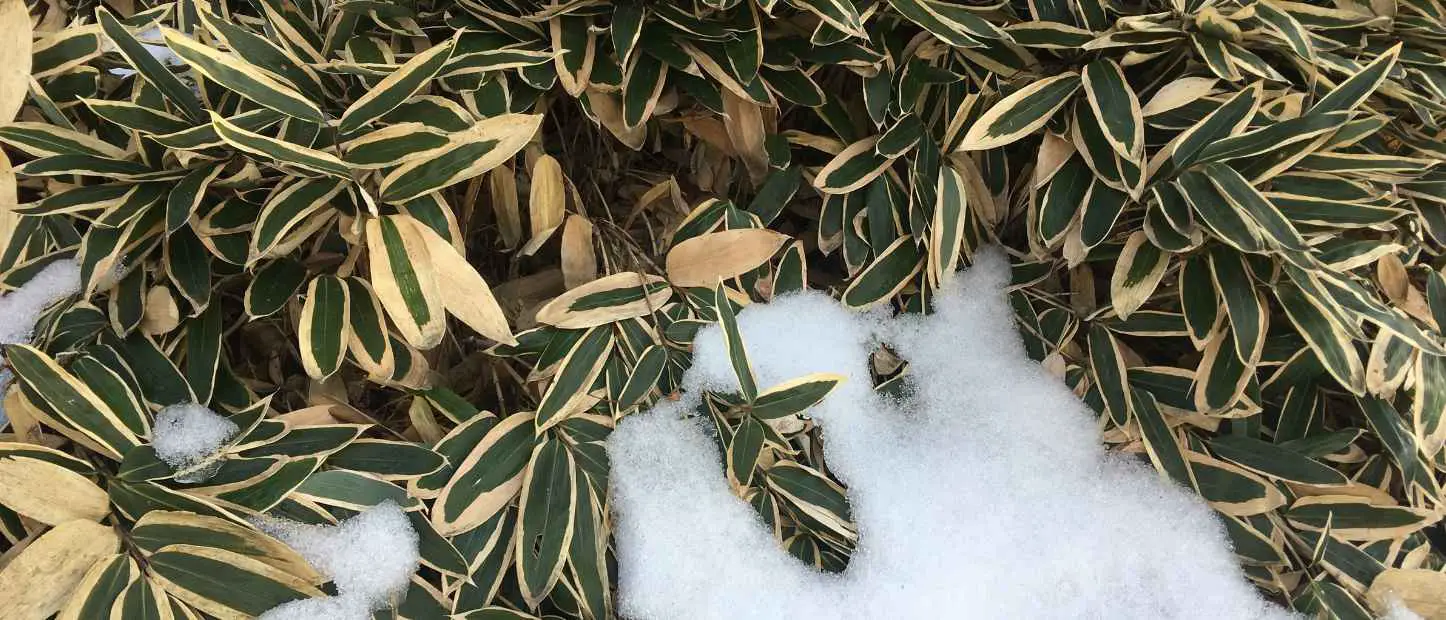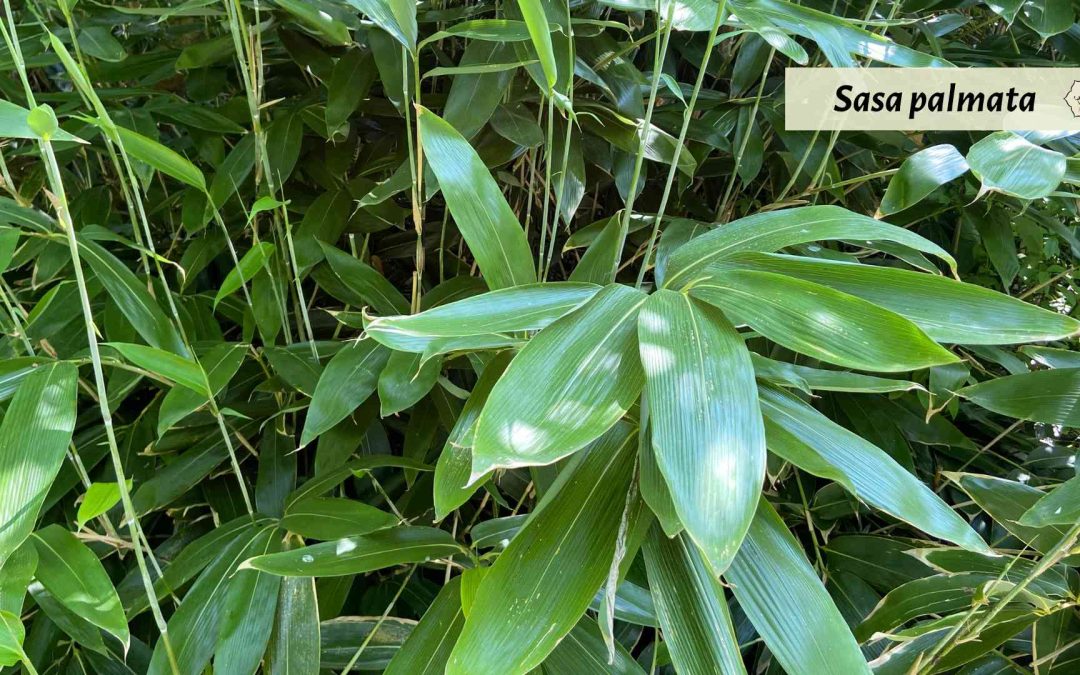As any die-hard bamboo enthusiast will tell you, there really is a bamboo species for every occasion. Sometimes you need a privacy screen, sometimes you need an eye-catching centerpiece, and sometimes you might just want to produce some fishing poles. But there are other times when only a wide-leafed and low-growing Sasa bamboo will provide the perfect garden accent you’re looking for.
Bamboo in the genus Sasa, also called broad-leaf bamboo, are small plants with running rhizomes. Their compact size makes them a good choice as accents or in confined spaces. Be aware, however, that the roots of this running bamboo can spread quickly if not properly contained. Like most dwarf bamboos, Sasas are native to the forest understory, and so they prefer locations with partial sunlight or mostly shade. They are also very cold-hardy.
This article — first published in June 2023 and most recently updated in March 2024 — is part of an ongoing series about different genera of bamboo. To learn more about this fascinating subfamily of grasses, check out some of these other articles.
- Black bamboo
- Golden bamboo
- Hiroshima bamboo
- Bambusa oldhamii: Chinese timber bamboo
- Chimonobambusa quadrangularis: Square bamboo
- Pseudosasa japonica: Arrow bamboo
- Semiarundinaria fastuosa: Temple bamboo

Characteristics of Sasa bamboo
Bamboo from the genus Sasa, which includes about 10 species, are most notable for their wide leaves and low stature. They look good and grow especially well under the canopy of taller trees or timber bamboo. They can provide a luscious groundcover that keeps its green throughout the winter, or they can also serve as an exotic, low-growing hedge. They are closely related to the genus Sasella, another small group of Japanese bamboo.
Compared to most other bamboos, Sasas are generally more shade-friendly and quite cold-hardy. They don’t grow well in hot, humid climates or in the full sun. Sasa is exclusively native to Japan, where winters reliably bring frost and snow. And if you’re looking to complement a tasteful Japanese garden, a small Sasa can provide the perfect addition alongside the pine and the maple.
But don’t be deceived by Sasa’s low stature. The running rhizome roots of this leafy grass are unusually aggressive. So if you don’t want it spreading all across your well-manicured garden, you would be wise to install some sort of bamboo barrier.
Bamboo species in the genus Sasa
Sasa kurilensis: Famous (in some social circles) for being the only bamboo species native to Russia and the northernmost naturally occurring variety. This extreme outlier thrives in the cold and the shade, underneath the canopy of taller trees. In the right conditions, it can grow 5 or 10 feet tall. Just don’t plant it in the full sun or a place like Florida or Fresno. Cold-hardy well below 0º F.

Sasa nipponica: Perhaps the most Japanese of all Japanese bamboo, or so the name would suggest. This is a dainty dwarf like the others, with prominent nodes and large leaves.
Sasa palmata: Commonly known as broad-leaf bamboo, this is one of the taller species of Sasa. Leaves are 2 to 4 inches wide, and slender culms, no more than a half-inch thick, can grow 5 to 10 feet tall. Hardy down to around 5º F. (see featured image)

Sasa tsuboiana: This particularly robust ground cover can get 5 or 6 feet tall, with luscious, deep green foliage. It makes a beautiful addition to the garden, providing a striking contrast alongside taller bamboo with buttery yellow culms.
Sasa veitchii: Also called Kuma-zasa, this is an especially popular variety of bamboo shrub. Its broad leaves are deep green, but in cold winters the leaf edges turn pale and take on a striking variegated appearance. They only get about 5 feet tall, but with thick, vibrant foliage. Hardy to 5º F. (See image.)

Additional Reading
If you’re looking for in-depth information about bamboo, you’ve come to the right place. You might also take a look at these other related articles and videos.
- Bamboo Basics: Runners vs Clumpers
- Bamboo Taxonomy: Classes and tribes
- 12 Common questions about bamboo
- YOUTUBE: Bamboo in Japan
FEATURE PHOTO: Sasa palamata at the Rombergpark and Botanical Garden in Dortmund, Germany. (Photo by Fred Hornaday.)




















